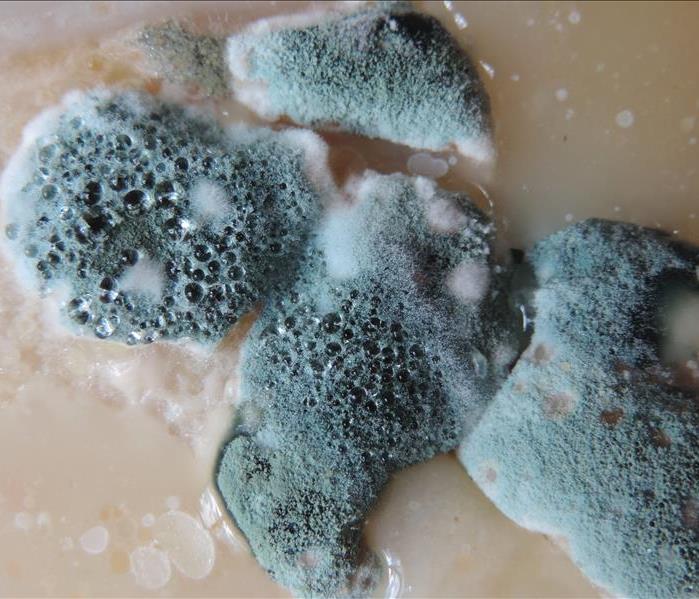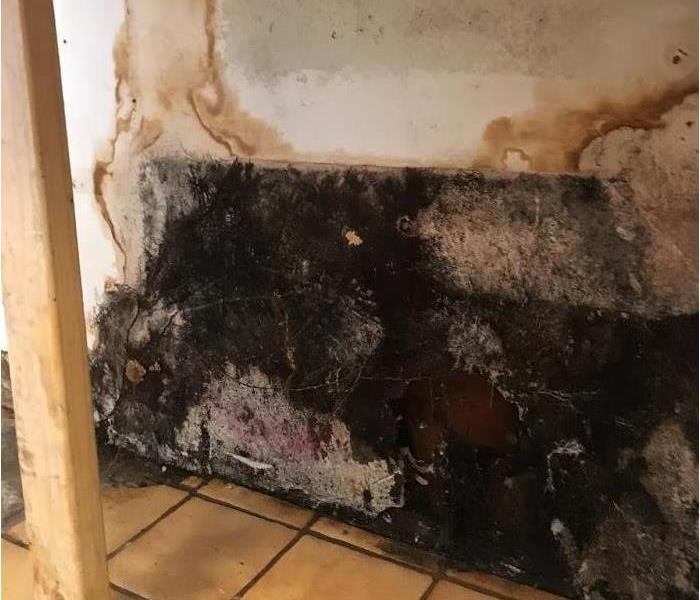Understanding Mold: Risks, Causes, and How to Handle It
11/6/2024 (Permalink)
Mold is one of the most common problems that homeowners face, especially in areas with high humidity or after water damage. While it’s often seen as a nuisance, mold can pose serious risks to your health and the integrity of your home. Understanding the causes of mold growth, the potential risks it presents, and how to address it effectively can help you protect both your property and your well-being.
What Is Mold?
Mold is a type of fungus that thrives in damp, warm environments. It can grow on a variety of surfaces, including wood, drywall, carpet, and even fabric. Mold spores are microscopic and are always present in the air, but they only begin to grow into visible colonies when the conditions are right. These conditions typically include excess moisture, poor ventilation, and organic materials to feed on.
There are many different types of mold, but some of the most common found in homes are:
- Black Mold (Stachybotrys chartarum): Often associated with water damage, black mold can be toxic and cause serious health issues.
- Aspergillus: Common in areas with high humidity, this mold can cause respiratory issues.
- Cladosporium: Typically found in damp areas like basements, this mold can irritate the skin, eyes, and respiratory system.
Causes of Mold Growth
Mold growth usually occurs in places where water or moisture is present for extended periods of time. Common causes of mold growth in homes include:
- Water Leaks: Leaks from pipes, roofs, or windows are among the most common causes of mold growth. Even small leaks that are undetected for long periods can lead to significant mold issues.
- Flooding: After a flood, the moisture left behind creates the perfect environment for mold to thrive, often within 24-48 hours of water exposure.
- High Humidity: Areas with excessive humidity, such as bathrooms, kitchens, and basements, are more prone to mold growth. Without proper ventilation, the moisture in the air can condense on surfaces and create a breeding ground for mold.
- Condensation: In colder climates or poorly ventilated areas, condensation can form on windows, walls, and ceilings, allowing mold to grow if not cleaned up quickly.
- Poor Ventilation: Inadequate airflow, especially in areas like bathrooms or laundry rooms, can contribute to mold growth as moisture builds up over time.
Health Risks of Mold Exposure
Mold exposure can lead to a variety of health problems, particularly for those with respiratory conditions or compromised immune systems. Here are some common health risks associated with mold:
- Allergic Reactions: Mold spores can trigger allergic reactions in sensitive individuals, including sneezing, coughing, runny nose, and itchy or watery eyes.
- Respiratory Issues: Mold exposure can worsen asthma and other respiratory conditions. Inhalation of mold spores can lead to chronic coughing, wheezing, and difficulty breathing.
- Skin Irritation: Direct contact with mold or mold spores can cause skin rashes, irritation, or even infections in some cases.
- Toxic Effects: Certain types of mold, like black mold, produce mycotoxins, which can have more severe effects on health. These can cause headaches, dizziness, nausea, and neurological symptoms when exposure is prolonged.
For individuals with compromised immune systems, the elderly, or young children, mold exposure can be especially dangerous and should be addressed as soon as possible.
Signs of Mold in Your Home
Mold can be tricky to spot, especially when it’s hidden behind walls or under floors. However, there are several signs to watch for that could indicate mold growth:
- Musty Odor: A persistent, earthy or musty smell is often the first sign of mold growth. If you notice this smell, it's important to investigate further.
- Visible Mold: Mold can appear as black, green, white, or even yellow spots or patches on walls, ceilings, floors, and furniture. Mold can often be found in areas like bathrooms, basements, and under sinks.
- Water Damage: If you notice water stains, discoloration, or warping on walls, ceilings, or floors, it could be a sign of water damage that may lead to mold growth.
- Health Symptoms: If you or your family members start experiencing respiratory problems, allergic reactions, or skin irritation while spending time in certain areas of your home, mold may be the culprit.
How to Prevent Mold Growth
While mold is nearly impossible to eliminate completely, there are several ways to reduce the likelihood of mold growth in your home:
- Fix Leaks Quickly: If you discover a leak in your roof, pipes, or windows, repair it immediately. Mold can begin growing in just 24-48 hours, so it’s essential to prevent water from accumulating.
- Control Humidity: Use dehumidifiers in areas prone to high humidity (such as basements or bathrooms) to keep moisture levels in check. Aim to keep indoor humidity levels below 60%.
- Ventilate Properly: Ensure that your home is properly ventilated, especially in areas prone to moisture, like bathrooms and kitchens. Use exhaust fans or open windows to help reduce moisture in the air.
- Clean and Dry Wet Areas: After cleaning up water from spills or leaks, make sure the area is thoroughly dried within 24-48 hours. This will prevent mold from taking root.
- Install Vapor Barriers: In basements or crawl spaces, vapor barriers can help reduce moisture from the ground and prevent it from entering your living spaces.
How to Deal with Mold in Your Home
If you find mold in your home, it’s essential to take action quickly to prevent it from spreading and causing further damage. Here’s how to handle mold removal:
- Contain the Area: If possible, isolate the affected area to prevent mold spores from spreading to other parts of the home.
- Remove Moldy Materials: For extensive mold growth, materials like drywall, insulation, and carpet may need to be removed and replaced.
- Clean Small Areas: For small mold patches, you can often clean them yourself using mold-killing solutions like diluted bleach, vinegar, or hydrogen peroxide. Be sure to wear protective gear, including gloves, a mask, and goggles, when cleaning mold.
- Professional Mold Remediation: If the mold growth is extensive, or if it’s in hard-to-reach areas like behind walls or under floors, it’s best to hire a professional mold remediation company. Professionals have the expertise, equipment, and cleaning agents necessary to remove mold safely and thoroughly.
Conclusion
Mold is more than just a cosmetic issue—it’s a health and safety concern that should be taken seriously. Whether caused by water damage, high humidity, or leaks, mold can quickly become a problem if not addressed. By understanding the causes and risks of mold growth, as well as taking preventive measures, you can protect your home and health.
If you discover mold in your home, hire a professional mold remediation company like SERVPRO. It’s crucial to act quickly to avoid further damage and potential health risks.






 24/7 Emergency Service
24/7 Emergency Service


